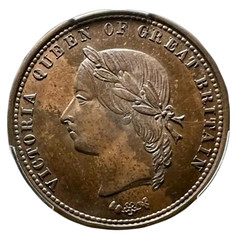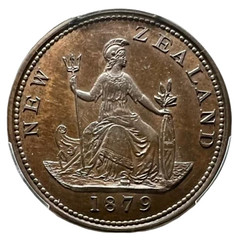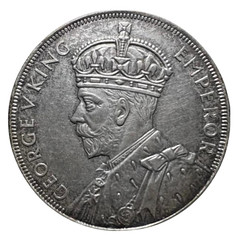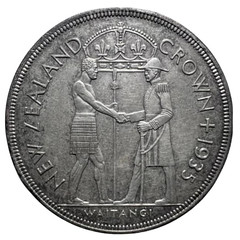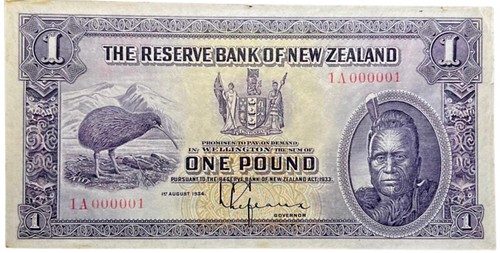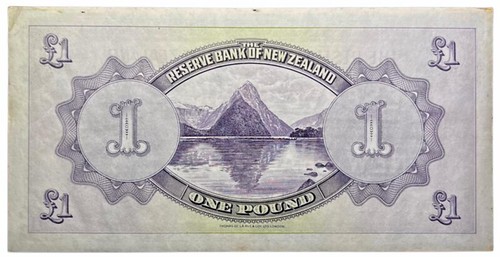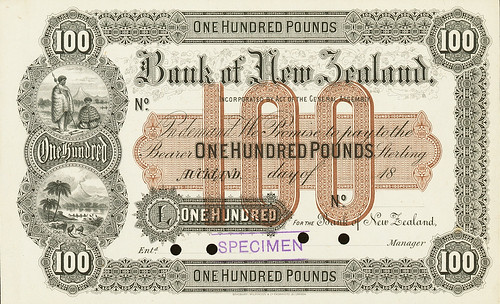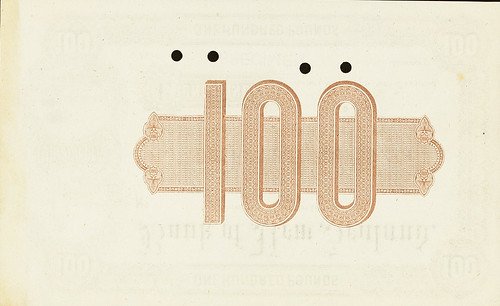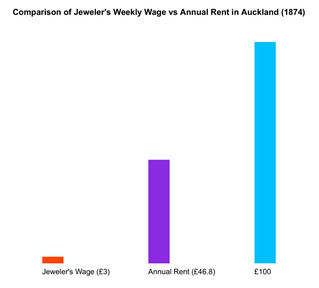
PREV ARTICLE
NEXT ARTICLE
FULL ISSUE
PREV FULL ISSUE
A NUMISMATIC HISTORY OF NEW ZEALANDJoshua Lee submitted this survey article on New Zealand rarities. Thank you. -Editor In 1840, New Zealand was under the extension of British law upon the signing of the Treaty of Waitangi. As a result, specific provisions from the British Imperial Coinage Act of 1816 were applied to the colony, enabling the standard gold, silver, and bronze coins to be used alongside various foreign coins, all of which were recognised as legal tender in New Zealand. New Zealand Early Currency In the mid-1800s, due to a shortage of coins, particularly copper ones, private merchants issued their own penny and half penny, commonly referred to as Tradesman Tokens, which remained in circulation until they were phased out of circulation in the 1880s. One of the most interesting albeit controversial items from this period is the 1879 "Pattern Penny" by Joseph Moore, which remains highly sought-after despite its classification as a token, dated 61 years before the first Royal Mint pennies and halfpennies in 1940 under King George VI. New Zealand Most Famous Coin Following a declaration under the Coinage Act of 1933, British coins lost their status as legal tender from 1 February 1935. Instead, New Zealand adopted its coinage system, maintaining the Imperial coins' exact weights, dimensions, and values. The world-famous 1935 Waitangi Crown of Five Shillings is the first New Zealand crown issue, depicting the pivotal agreement that represents the signing of the Treaty of Waitangi on 6th February 1840. Featuring on the reverse, a finely detailed depiction of a Ngapuhi Maori chief, Tamati Waka Nene and New Zealand's first governor William Hobson shaking hands. The First New Zealand Government Issued Banknotes The first issue of the Reserve Bank of New Zealand banknote depicts Chief Tawhiao - the second Maori King, a Kiwi, and Mitre Peak. Initially intended as a temporary issue, the design lasted from 1934 to 1940. This example uniquely stands out as New Zealand's First Circulating No.1 One Pound, reportedly spent in 1935 as payment for a room, and framed upon the hotel owners realising its significance. The Highest Denomination Banknote for New Zealand Around the same time, private "Trading Banks" issued their own banknotes until the Reserve Bank of New Zealand was established in 1934. The Bank of New Zealand was the largest of those banks and still operates to this day. To this day, the highest denomination of either coin or banknote ever issued for circulation in New Zealand would be 100 Pounds. A quote from the 1900s from Robert Pepping's publication exemplifies the rarity of a 100-Pound banknote "I have never seen a 100 Pound note[…]. For the ordinary mortal, it is one of those things that are too good to be true." The 100-Pound above was formerly owned by Amon Carter, whose collection contained some of the world's best examples of coins and banknotes. Amon Jr. was a prolific collector-dealer and held the title of IBNS Life Member #5
Remarkably, a single £100 note could cover over two years of rent for such a house. On 9th November 2023, at Heritage Auction's World Paper Money Signature Auction, New Zealand's Highest Denomination Banknote - Amon Carter's Bank of New Zealand £100 - will be up for sale.
To read the complete lot description, see:
Wayne Homren, Editor The Numismatic Bibliomania Society is a non-profit organization promoting numismatic literature. See our web site at coinbooks.org. To submit items for publication in The E-Sylum, write to the Editor at this address: whomren@gmail.com To subscribe go to: https://my.binhost.com/lists/listinfo/esylum All Rights Reserved. NBS Home Page Contact the NBS webmaster 
|
